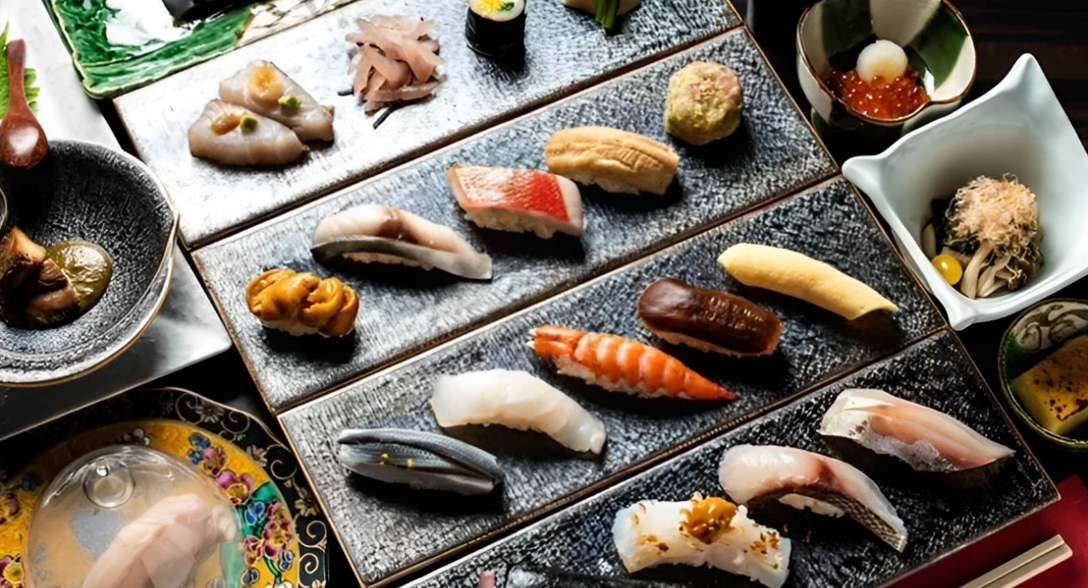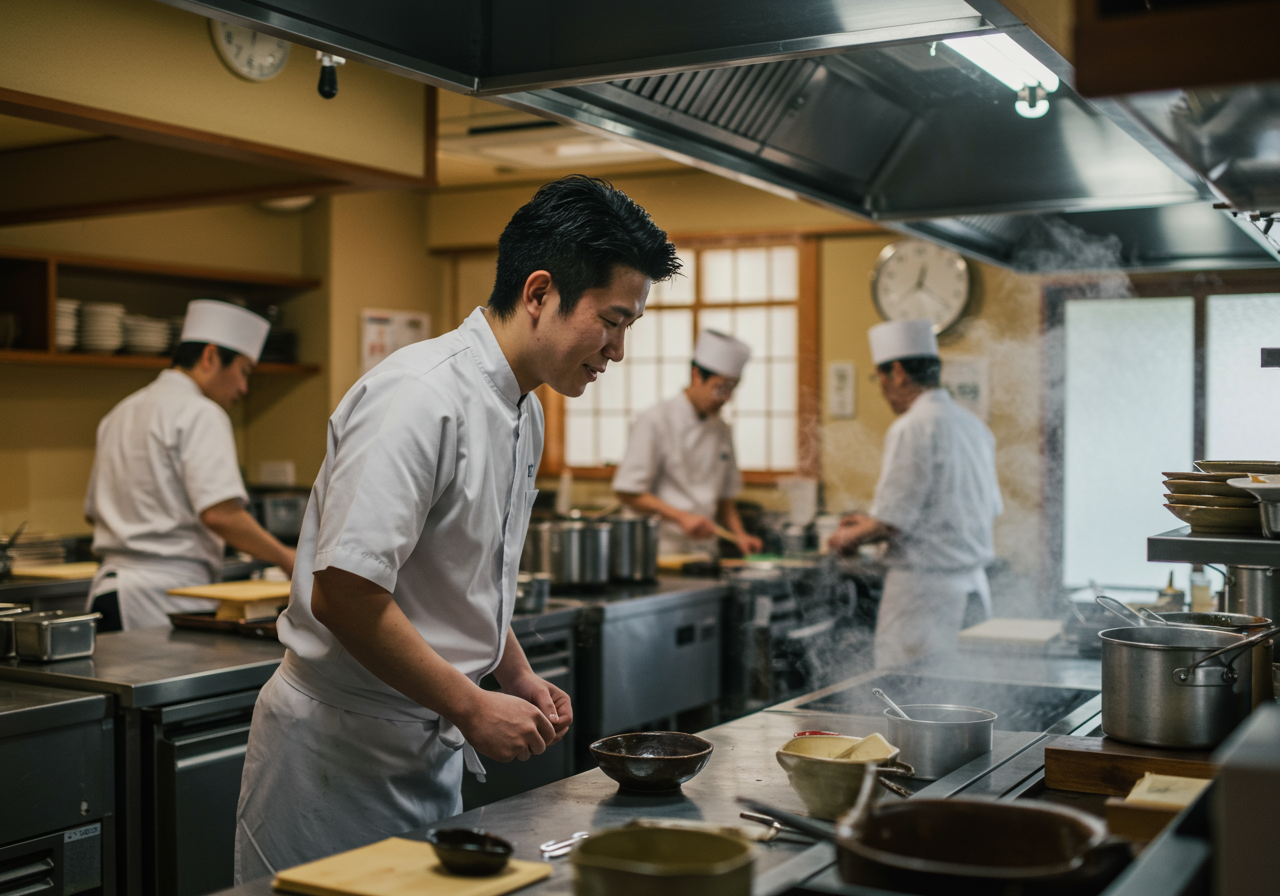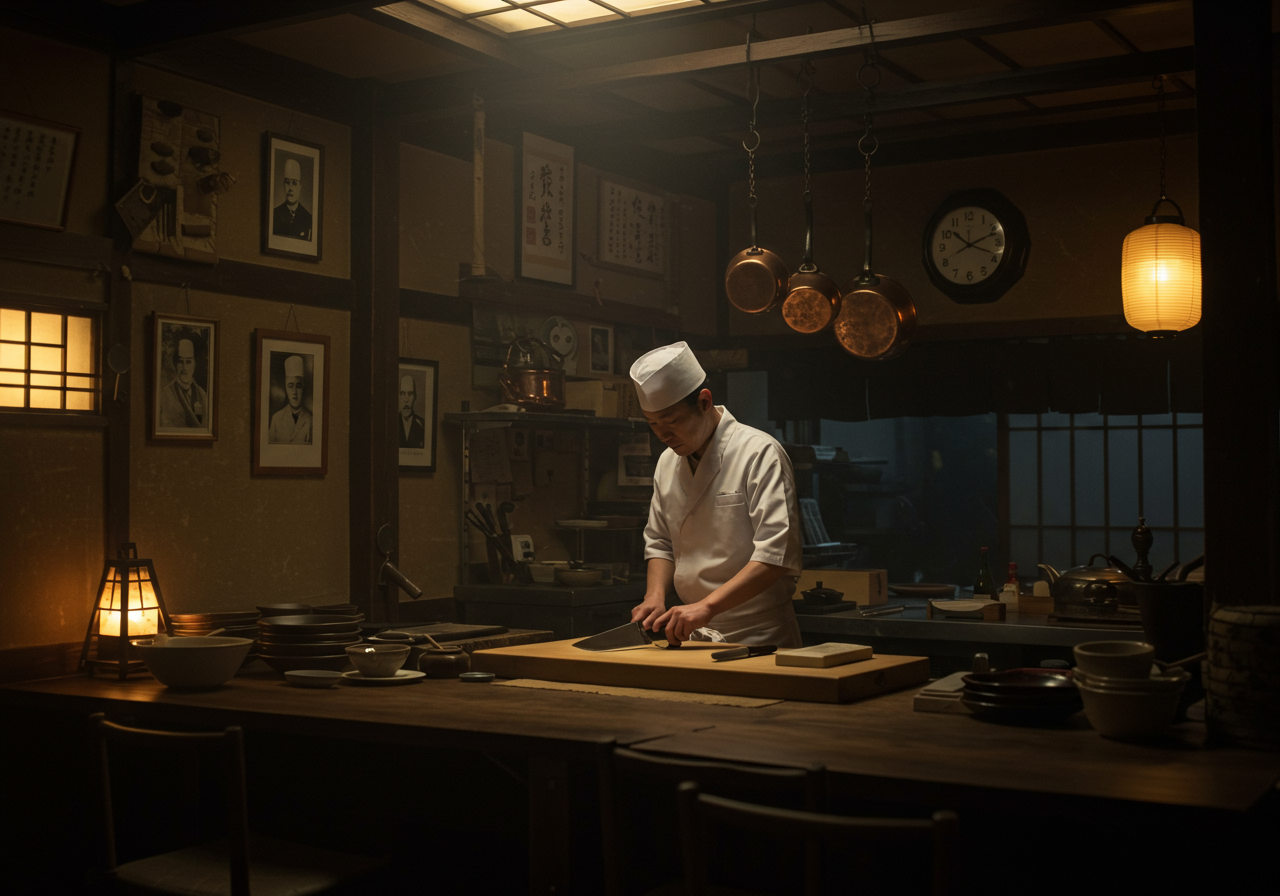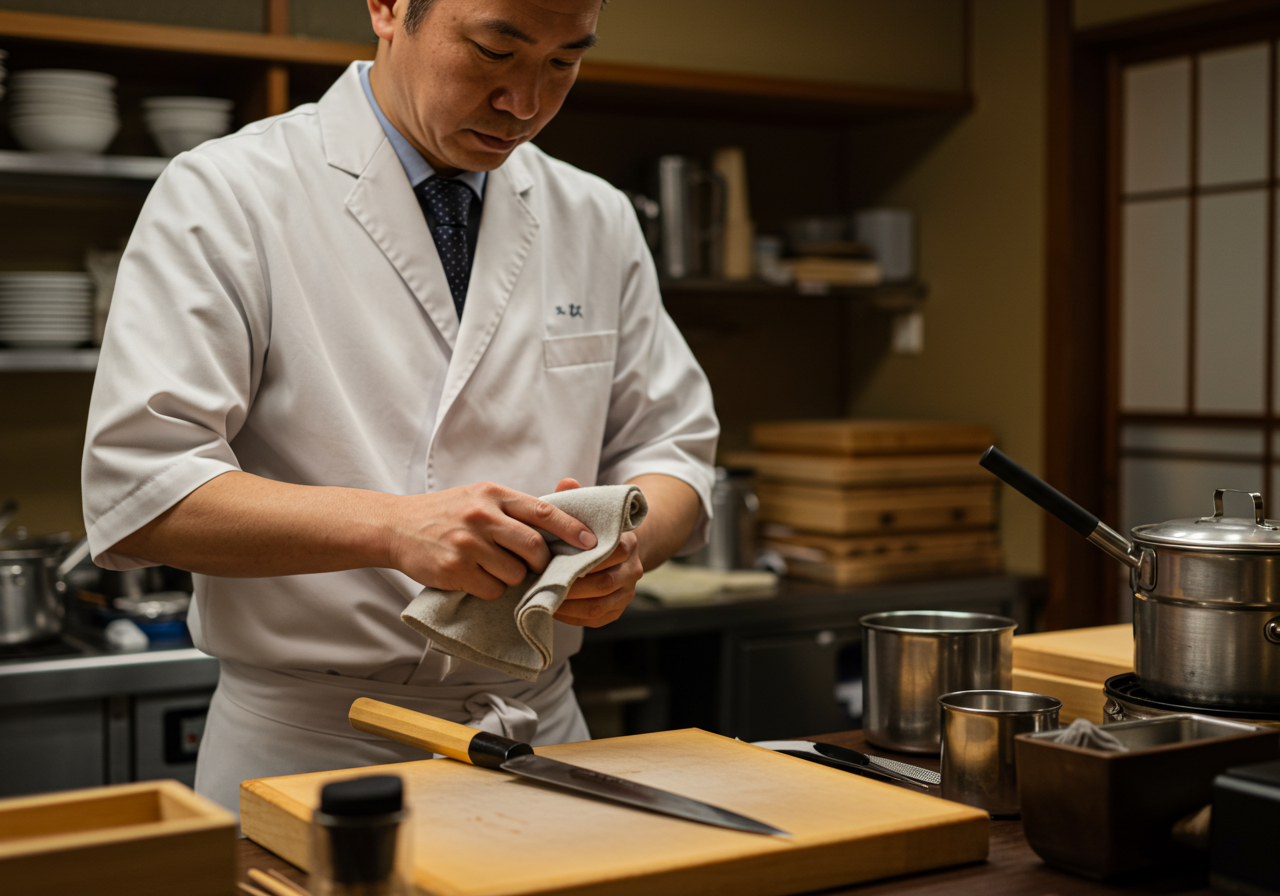
The Chef’s Code: Devotion to Flavor and the Five Senses
-
A plate may fade, but the memory of flavor—crafted through the senses—endures.
Flavor lives in more than taste—it lives in sight, sound, aroma, and touch.
In this video, we’ll explore how mastering the harmony of the five senses transforms a dish from something eaten into something remembered. -
-
In the kitchen, flavor is more than taste—it is an orchestra of all five senses.
The colors that catch the eye, the fragrance that rises with heat, the texture that lingers on the tongue, even the sound of a crisp bite—together they shape an experience that stays in memory long after the plate is empty. -
Through my training in Tokyo and years of hands-on work, I’ve learned that beyond technique and knowledge, it is the chef’s devotion to sensing deeply and respecting flavor that defines true mastery.
This chapter begins with a belief:
“Cooking is an art to be felt through the senses and conveyed through the heart.”
If these reflections sharpen your awareness, or inspire even a small shift in how you approach flavor, then this page has served its purpose. -
1. Stir the Senses—Sight, Taste, Aroma, Texture, Sound
Cuisine is a sensory art.
The beauty of presentation. The depth of flavor. The richness of aroma. The intrigue of texture. The subtle pleasure of a crisp bite.
Only when all five senses are engaged does a dish transcend the ordinary and become a lasting experience.The angle of a cut changes the sound of a chew.
A few degrees of heat alter the fragrance of the whole plate.
Even plating can shift the perception of taste.True deliciousness isn’t accidental—it’s engineered through intention.
Not through showmanship, but through precision, restraint, and respect for every element. -

A chef’s mission isn’t to simply satisfy hunger.
It is to awaken the senses—and move the heart—with a single plate. -
2. Never Underestimate the Staff Meal. Make the Humble Ingredients Shine.
The staff meal is where a kitchen’s true ability is revealed.
Limited time. Limited ingredients. Yet the goal remains the same: make it taste great.
This is where a cook’s real skill is tested.Don’t rely on premium cuts.
Extract flavor through technique—knife work, heat control, thoughtful prep.
When done with care, even the cheapest ingredients can sing. -

The staff meal is not a shortcut.
It’s a proving ground—a daily test of your fundamentals.In the end, it’s not the cost of the ingredient that defines the dish—
It’s the hands that shape it. -
3. The Key to Great Cooking Is Balance
The flavor of a dish is determined by balance—
cooking time, heat intensity, seasoning amounts.
Every element matters.A few seconds too long on the heat can ruin the texture.
A pinch too much salt can mask the true character of the ingredient.
Excess—in fire or flavor—can break a dish. -

What matters most is attention to detail and a sense of proportion.
Knowing when to pull back.
Knowing when to lean in.It takes restraint to avoid overdoing, and skill to fill in what’s missing.
This is where a chef’s judgment is truly tested.Deliciousness doesn’t come from flash.
It lives in subtle adjustments—in the quiet art of knowing just enough. -
4.Nothing Surpasses Quality Ingredients
The foundation of delicious cooking lies in quality ingredients.
When the ingredients are top-notch, even simple preparations can create truly remarkable dishes.That’s why honing the skill of discerning ingredients and selecting them carefully is essential.
A chef’s true skill is measured by how well they can bring out the best in their ingredients. -

Over-seasoning or overly complicated techniques can sometimes mask the natural charm of the ingredients.
Truly great cooking respects and highlights the original flavors that the ingredients offer.While embracing diverse culinary cultures worldwide, never lose sight of the respect for ingredients—
this is the essence of simple, yet powerful cooking. -
5. Becoming a Chef Who Creates Delicious Dishes
To create delicious dishes, you need not only technique but also heart and sensibility.
By facing the ingredients before you with sincerity and handling them carefully, the flavor changes dramatically.Every detail matters—the way you use your knife, the precision of your heat control.
These small attentions add up to create dishes that truly resonate with those who eat them -

Also, it is essential to value daily experience and learning, and to keep honing your skills without fear of challenges.
A chef’s growth is a continuous journey of pursuing true deliciousness.To become a chef who can create delicious dishes means becoming an artisan who crafts plates that are rich in flavor and move the heart.
“A plate may fade, but the memory of flavor—crafted through the senses—endures.”


Character and Attitude
This chapter centers on one guiding belief:
“Before you can be a great chef, you must first be someone others naturally respect.”
Here, I explore the essential qualities that come before skill—like integrity, emotional control, humility, and the power of your words.

Skill and the Attitude Toward Mastery
In this chapter, we dive into how to develop and refine your technical ability as a chef—from the fundamentals of katsuramuki and tsuma-uchi, to the importance of planning, preparation, and proper whetstone care.
It’s not just about how to move your hands—it’s about how to build a mindset that respects every step of the craft.

Knowledge and Understanding
In this chapter, we explore what it means to become a thinking chef:
from understanding seasonality and flavor science, to supporting the restaurant’s success, to the simple power of taking notes and staying humble.

Professionalism and Daily Practice
This chapter explores how these daily attitudes and habits are indispensable for living as a top-level chef.
No matter how small the task, every action matters.
Our Story
-
Tradition of Sakai, in Your Hands
"Where can I find a truly great knife?"
We started KIREAJI to answer that question. While the number of skilled craftsmen is declining in Japan, many people overseas are seeking authentic blades. With that in mind, we carefully deliver each knife—bridging tradition and kitchens around the world. -





